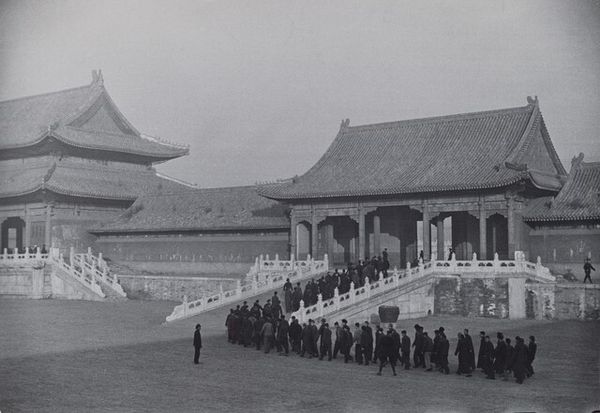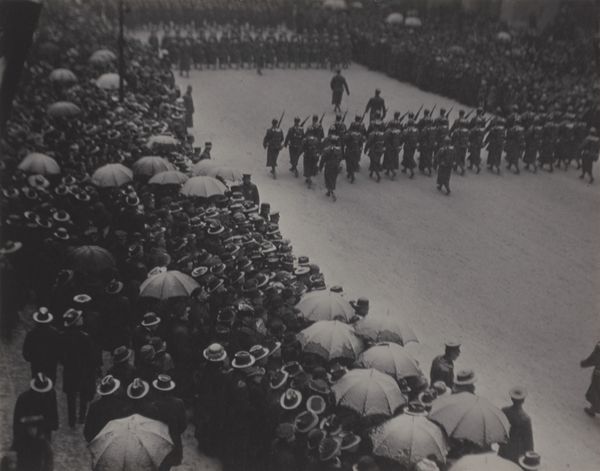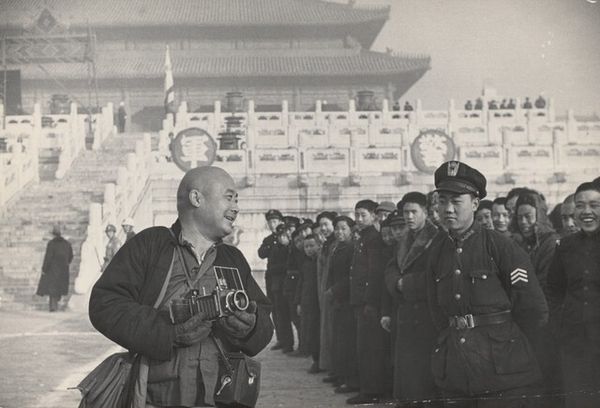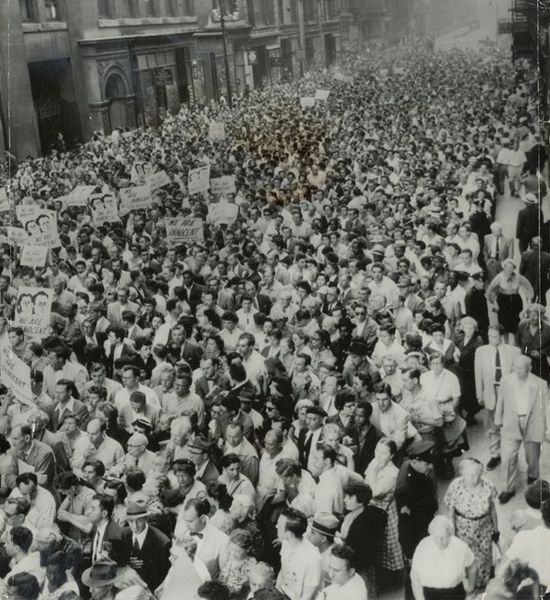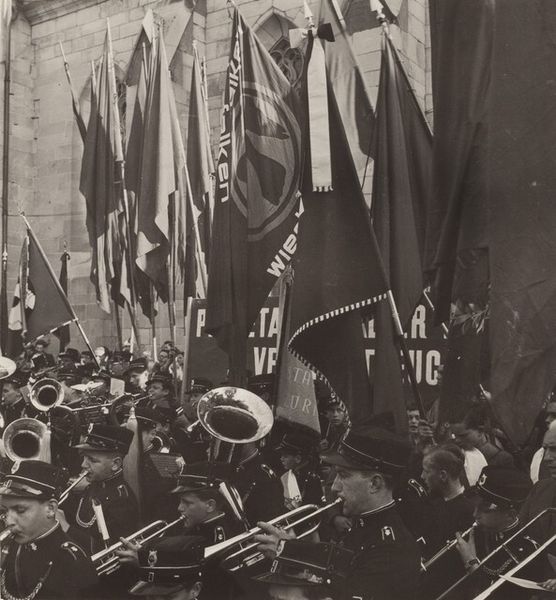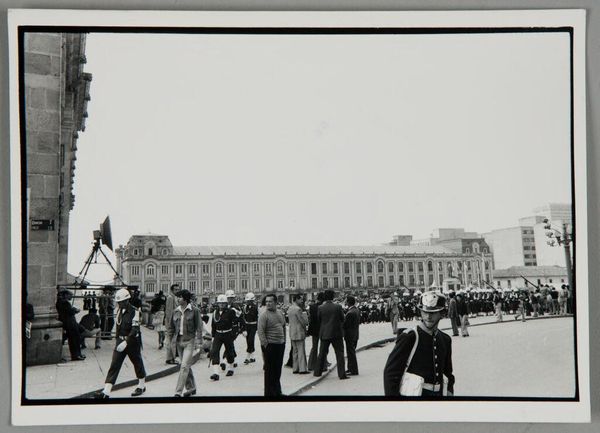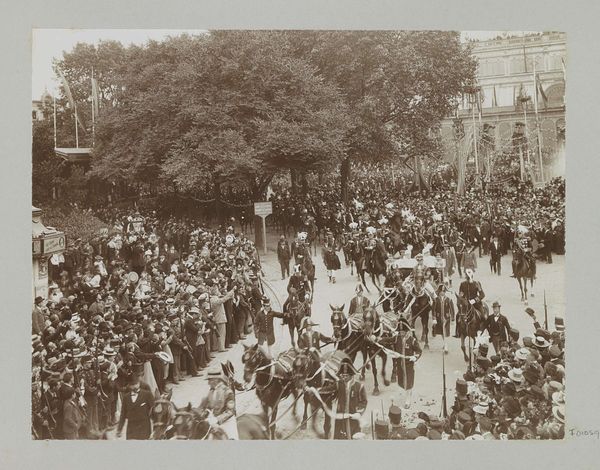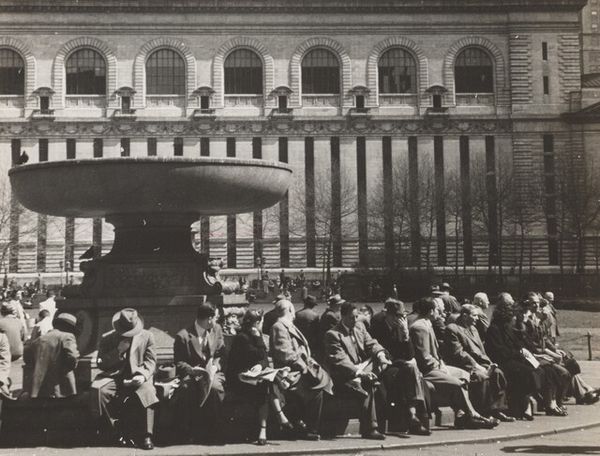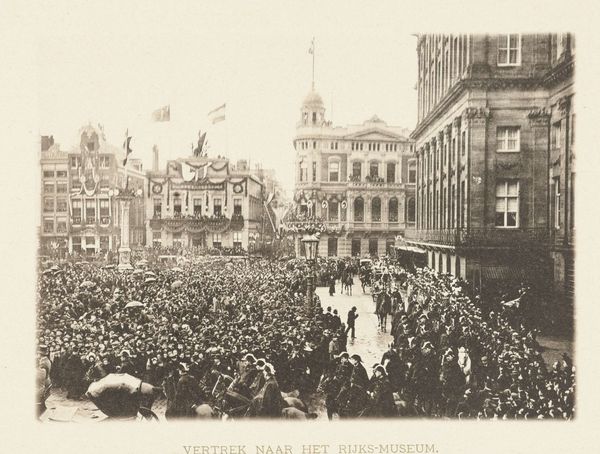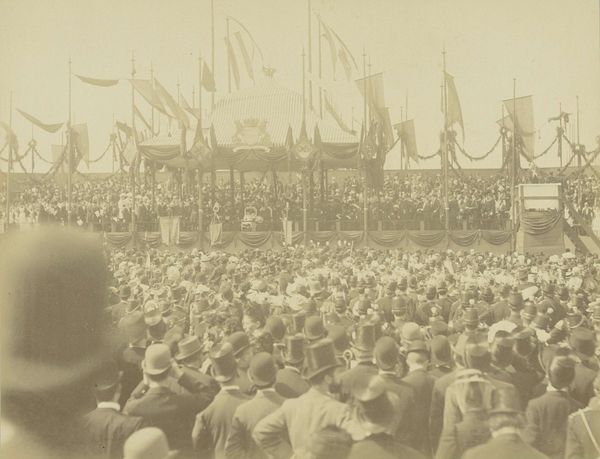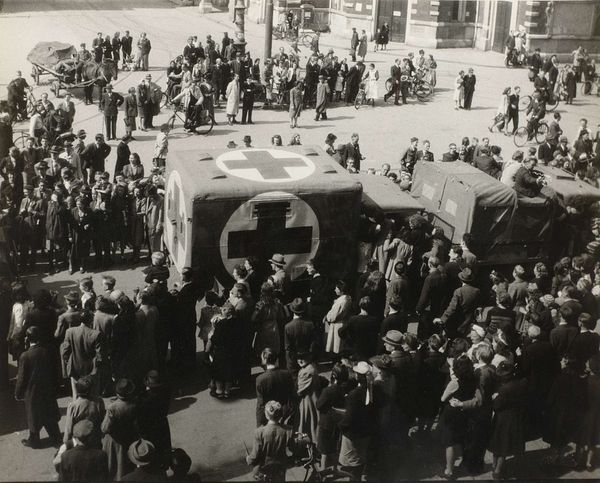
The First Early Spring after the Liberation, a Celebration of International Women’s Day in Front of the Taihe Temple of the Forbidden City Possibly 1949 - 2021
0:00
0:00
print, photography
#
portrait
# print
#
social-realism
#
photography
#
cityscape
#
monochrome
Dimensions: image: 40 × 55.9 cm (15 3/4 × 22 in.) sheet: 50.5 × 60.9 cm (19 7/8 × 24 in.)
Copyright: National Gallery of Art: CC0 1.0
Curator: This image, thought to have been produced sometime between 1949 and 2021, is a photographic print by Niu Weiyu titled "The First Early Spring after the Liberation, a Celebration of International Women’s Day in Front of the Taihe Temple of the Forbidden City". Editor: It’s striking. The monochrome gives it a timeless feel, even a gravitas. It's a sea of people beneath that imposing architecture... it almost feels like a David and Goliath situation, doesn't it? Curator: The Taihe Temple, and the Forbidden City behind it, of course represent Imperial power. To see a crowd, presumably mostly women, gathered in front of it signifies a significant shift in power dynamics. Women asserting their place in the new China. Editor: Absolutely. Looking at those banners, that visual language, situates this within a very specific sociopolitical moment. We see International Women’s Day being celebrated right after Liberation—it marks the intersection of socialist ideology with emergent feminism. This image speaks to collective agency and identity. Curator: Yes, and note the architectural backdrop: The Forbidden City, with the Taihe Temple as a key element, becomes a powerful symbol of the past. The people gathered are literally facing down the symbols of the old dynastic power structure. It's also interesting that this image resonates with similar celebrations throughout the world; it's a universally understood arrangement, updated to local realities. Editor: That's insightful. But I can't help wondering about the later years implied in its date range. How might contemporary viewers respond? Is this a straightforward historical document, or does its meaning shift with China's more recent trajectory, given its contemporary economic policies, the changing place of women in public and political life, as well as increasing nationalism? Curator: A photograph is never just a record. Its symbolic weight shifts through time, influenced by cultural memory. This image is an artifact now. Perhaps its current significance is to examine how the ideals of a revolution adapt and evolve. Editor: Ultimately, I think the photograph serves as a reminder that social progress is rarely linear; its depiction of early revolutionary promise invites ongoing reflection. Curator: Agreed. The powerful, hopeful images and symbols remind us of what persists, what changed, and the power of collective will.
Comments
No comments
Be the first to comment and join the conversation on the ultimate creative platform.

